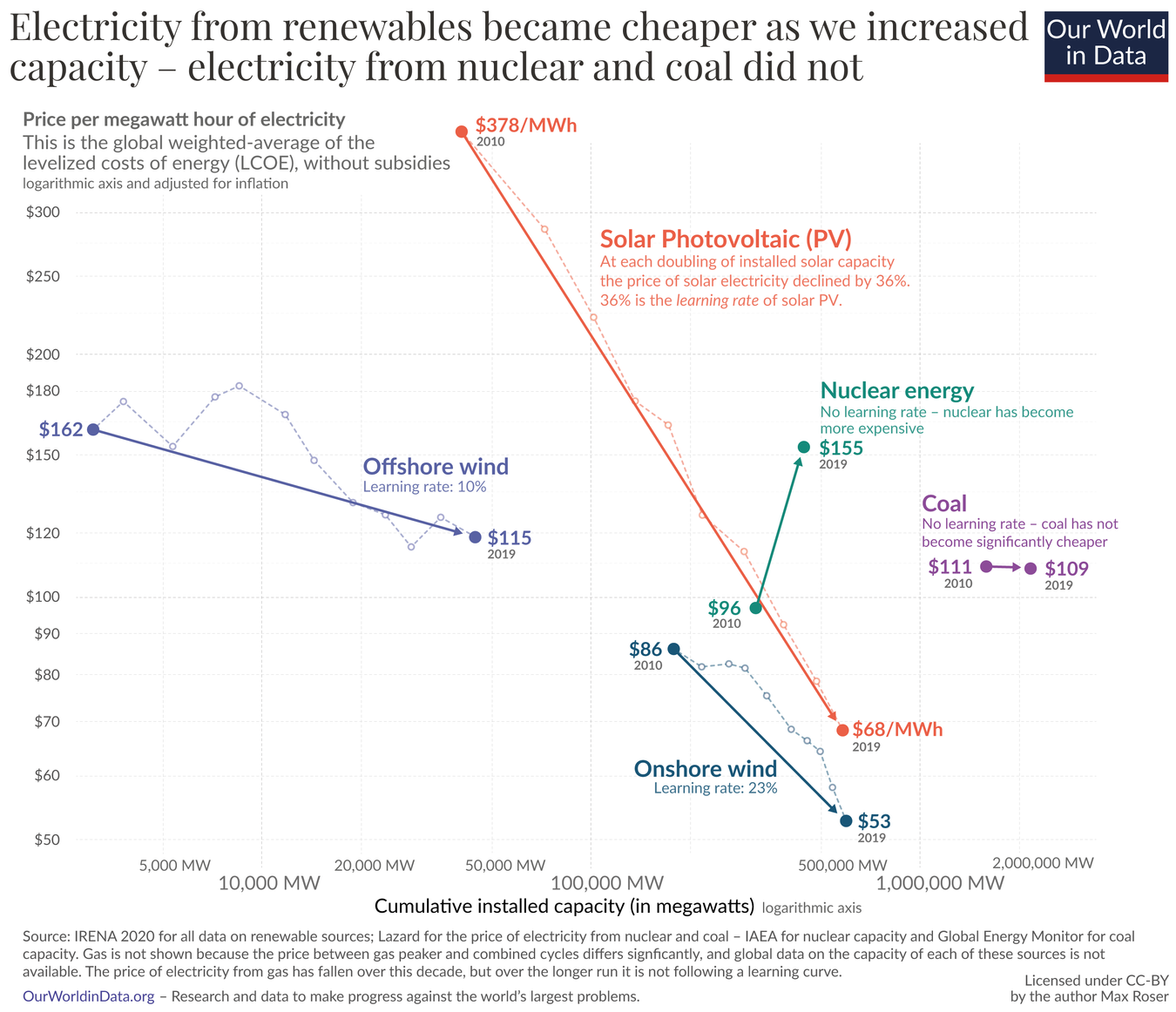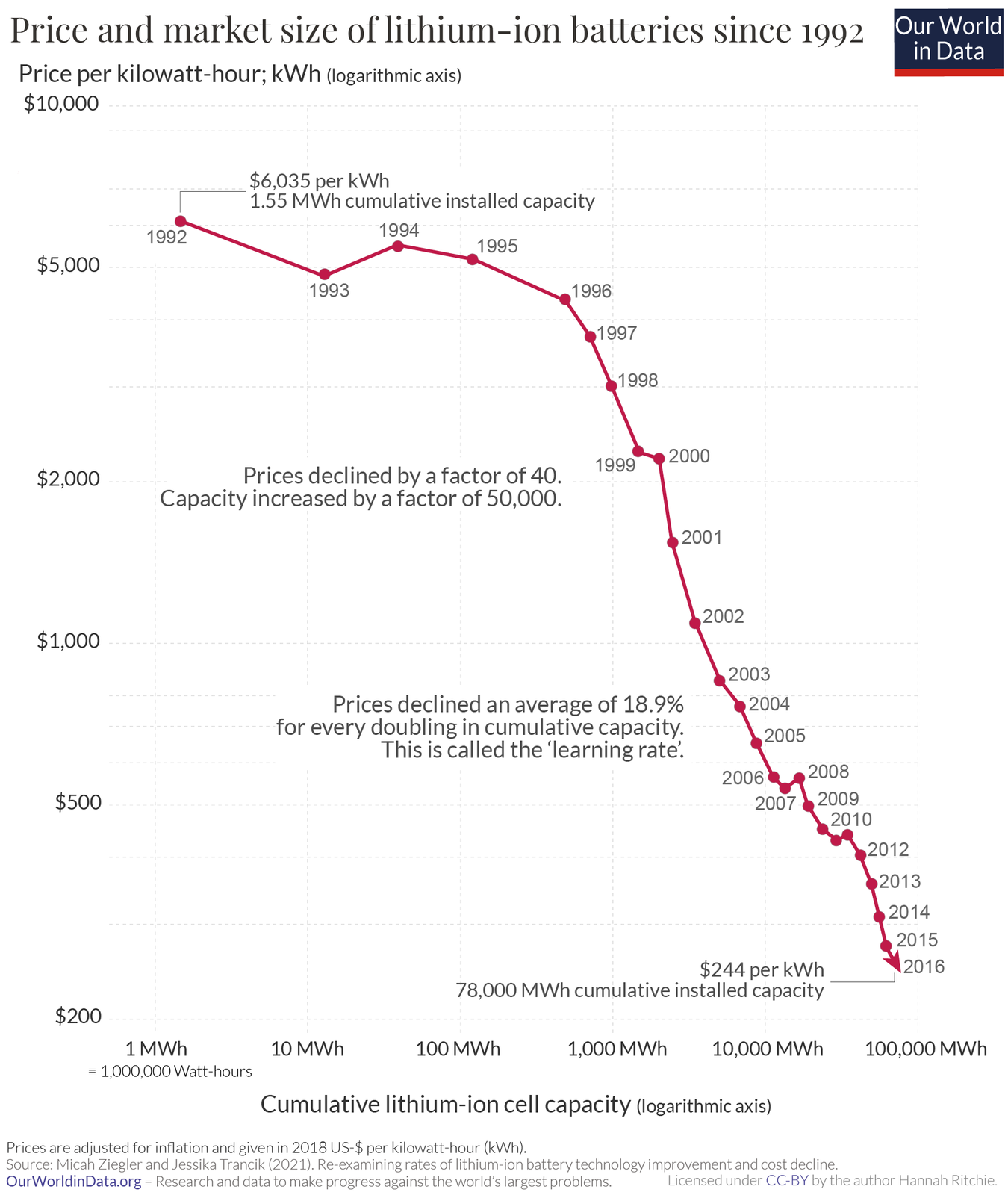I'm not quite sure, why it was left out of that graph, maybe they didn't have matching data, but it is shown here (from the same source article):

I'm not quite sure, why it was left out of that graph, maybe they didn't have matching data, but it is shown here (from the same source article):

So, what did you want me to do? Post the same graph, but black out the nuclear line, so no one can see it going upwards? I do find that data point interesting, too, but I would have posted this, even if it was just the solar dropping as it does.
As far as I understand the description at the top of the image, no, storage is not included. But if production costs are insanely low, that of course does leave plenty room for storage or redundancy. In particular, personally I believe the costs will continue on a logarithmic drop and we're at the steep part of that, so even if it really is not the case today, I do expect solar production + storage to become cheaper in a not too distant future.
Also, as another graphic from the source article illustrates, battery costs are rapidly dropping, too:

Hi, I'm a human being, not an "anti nuke propagandist". I just checked, if there's newer data, and well, there is, but no one seems to have formatted that in a way yet, which you or me would be willing to digest.
Personally, my impression has been that the solar industry was one of the industries that was pretty much completely unaffected by COVID, so I felt this graph was still perfectly relevant.
But even if it were strongly affected, I do not see why our technological progress in manufacturing, that we had in 2019, should evaporate with COVID.
There is inflation and a rise in natural catastrophes, but I feel like those would affect nuclear and others roughly proportional.
I was considering whether this is just a shitpost, but your other comments suggest that you're completely serious. It does not go away. Radioactive decay causes multiple transitions between radioactive elements until it ends up as lead, which does not decay further.
Of course, it should also be said that it's better to have no waste than waste that eventually turns into lead.
And that it's still better to have waste than waste which also happens to be toxic.
The source article actually talks about this and measured data suggests nuclear cost actually went up, despite more capacity being built.
This is the first time, I've read this anywhere. More sources/studies would be really important. And there is lots of interpretations to be had on the why, but assuming the article isn't completely off the mark, that's cold, hard data suggesting that your (perfectly reasonable) assumption is actually wrong, after all.
There is this vision for the future, where people can use the battery in their electric car (or a separately bought battery) to store power, either produced by their own cheap solar or from the grid during over-production. And then some software could sell that energy back into the grid at night or during high demand.
If that becomes a reality, we might have it at least so that if a chunk of the grid gets cut off for a bit, it can actually tide that over.
Yeah, there may be situations/regions where even the cheapest solar isn't good enough. But at some point, the cost difference does become an oppressive argument. Even at that price in 2019 already, you can use around 75% of your money to build storage or redundancy in multiple regions / with alternative renewables.
And this trend of cost reduction for solar will very likely continue, even if it might start levelling off at some point.
I especially find it weird, because castles and churches exist, too. Sure, they were somewhat further along with technology, when those got built, but it still took a ton of physical labor and at least churches weren't built out of pure necessity either.
No, not at all. It's a joke post, abusing the in-memory representation of the Option type to construct numbers. When nesting the Option type, it turns into a densely packed bit vector...
And if I understand the purpose of Fin correctly, you're picking on the one 'peasant language' that actually has something like that built-in.
In Rust, you can specify the type of an array as e.g [u8; 3]. Which is an array containing values of type u8 (unsigned 8-bit integer) with a fixed, compile-time-guaranteed length of 3. So, [u8; 3] could be used to represent an RGB color, for example.
It is an array, not a set, but well, close enough.
I thoroughly enjoy that it's still "X, formerly Twitter". I've seen other news sites just give up completely and continue referring to it as "Twitter". "X" is just really bad at being a name, because it always sounds like you're talking about some unknown thing, like "XYZ".
Possible. But well, whether these regulations actually are bullshit or not, kind of doesn't matter. A dumb solar panel won't ever need to be regulated as much. If that's what makes it cheaper, it still is cheaper.